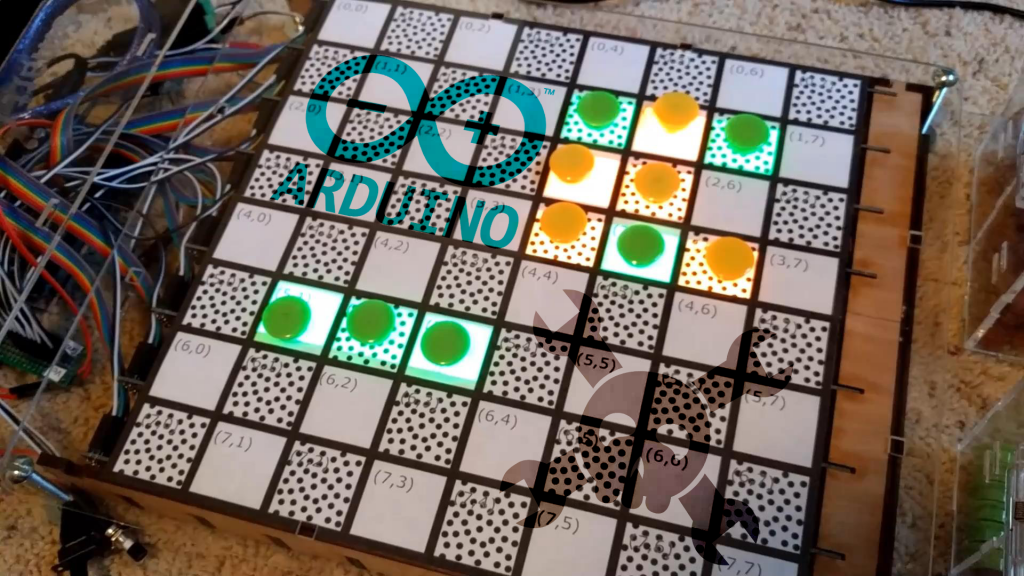First of all, it was great to see the interest this project has generated. Thank you everyone!
It’s a humbling and very motivating experience, seeing people’s reactions, reading through the feedback, both praising and suggesting changes, makes me want to create more things 😉
This project has been featured on a number of websites:
- https://www.autodesk.com/products/fusion-360/blog/smart-game-board-microsoft-garage/
- http://hackaday.com/2017/04/16/interactive-board-prompts-moves-for-checkers-and-chess/
- https://blog.arduino.cc/2017/04/17/this-maker-built-a-game-board-that-lights-up-correct-moves/
- https://twitter.com/arduino/status/854064623900913664/
- https://blog.hackster.io/this-smart-board-teaches-how-to-play-checkers-and-prevents-cheaters-too-cd29e7cf77cd
Updates to the project
Few additions have been made during last week:
- New game: Connect 4
- New game: Tic Tac Toe
- Further code optimizations, that cut the memory footprint almost in half!
Both new games can be played with a single magnetic piece – this piece is then used to touch the cell where each player wants to make a move.
Since cells are color coded per player, new cells can be taken over by players without losing any existing cells (i.e. players are always adding cells, instead of moving pieces on the board), and those 2 games have only single piece type (which is different than Checkers, Chess, etc.) there is no need to keep physical game pieces on the board throughout.
This allows for a quicker and easier cleanup/setup for the next game.
Video






Leave a Reply